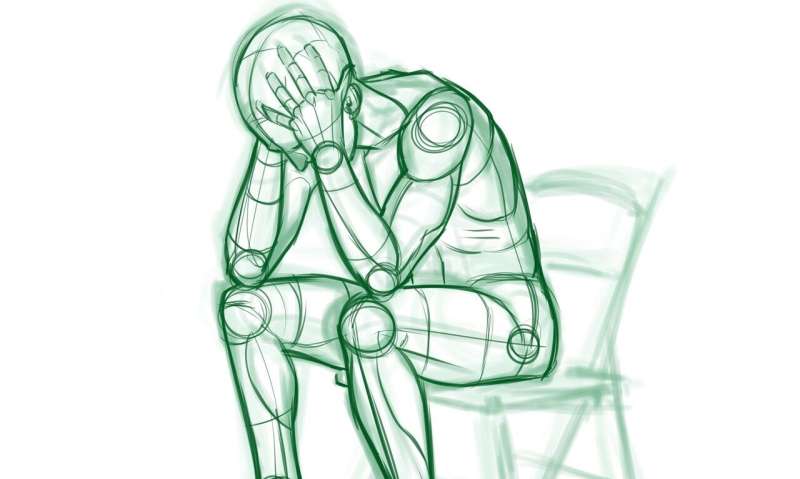

More than 45,000 Americans died by suicide in 2020, a 30% increase over 2000, making it the 12th leading cause of death in the U.S. Studies have shown that the social and environmental factors where people live, like exposure to violence and crime, access to quality health care, food insecurity, job opportunities, and air pollution, are connected to suicide rates.
Now, a new research study from the University of Chicago provides more statistical evidence that social determinants of health are tightly linked to suicide risk. The study, “Social Vulnerability and Risk of Suicide in US Adults, 2016–2020,” published in JAMA Network Open, shows that the suicide rate nearly doubled between the least socially vulnerable counties and the most socially vulnerable, clearly showing that programs designed to address health and economic disparities in these areas could prevent needless deaths.
“A huge factor in the rate of suicide in the United States is social vulnerability of the community that you live in,” said Robert Gibbons, Ph.D., the Blum-Reise Professor of Medicine and Public Health Sciences at UChicago and senior author of the study. “A doubling in the suicide rate is an earthquake. It’s enormous. If you can stratify risk and know that people in a community are going to be that much more at risk, that’s huge because you can target interventions to those communities.”
The study began as a class project for a course Gibbons teaches in statistical applications for graduate students and undergrads. A previous class looked at associations between lithium in ground water and diagnoses of bipolar disorder and dementia in the U.S., which was published in JAMA Psychiatry in 2018.
The new project built upon recent work published in Health Services Research by Loren Saulsberry, Ph.D., Assistant Professor of Public Health Sciences, Diane Lauderdale, Professor and Chair of Public Health Sciences, Gibbons, and others, that developed a new metric for measuring social determinants of health called the Social Vulnerability Metric (SVM).
The SVM pulls in more than 200 variables from 17 publicly available, nationally representative databases focusing on demographics like age, education, employment status, housing and transportation, and health insurance coverage. The resulting model produces a score that summarizes a person’s vulnerability due to social risk factors and provides a measure of how able one might be to weather different events or cope with long-term challenges. The SVM is highly correlated with mortality rates at the county level, and it tracked with zip code level outcomes like COVID-19 mortality and vaccination rates, and emergency room visits for asthma.
Gibbons’ students divvied up the statistical work to see how the SVM was associated with suicide rates, using publicly available data on deaths by suicide provided by the Centers for Disease Control (CDC) for 2016 to 2020. Shuhan Liu, who is a master’s student in statistics at UChicago and recently accepted in the doctoral program in statistics at Northwestern University, led the analytical work, and Samuel Morin, a fourth-year undergraduate at UChicago, spearheaded work to extract data from the CDC sources.
The team calculated SVM scores for U.S. counties and divided them into 10 tiers from the least vulnerable counties to the most. They saw an 82% increase in suicide rate from the lowest to highest tier, as measured by the SVM. The team also evaluated another tool developed by the CDC called the Social Vulnerability Index (SVI), that measures the impact of social determinants of health. There was a 56% increase in suicide rate from the lowest to highest risk group according to this measure.
Gibbons said this shows an undeniable link between the impact of these factors and suicide. “We didn’t want to make any assumptions that the social vulnerability metric and its relationship to suicide was a simple linear function in our analysis of the data, but it turns out the higher the SVM, the higher the rate of suicide.”
The research team proposes several common-sense public health and economic policies that could reduce suicide rates by targeting social vulnerability in communities, such as improving access to mental health services by opening more clinics and changing the availability of insurance coverage and cost for these services.
Social isolation is another factor that contributes to vulnerability, and community programs, shared public spaces, and volunteer services could build stronger social networks. Increasing access to quality health care in general would also make a difference, particularly in rural areas by expanding Medicaid coverage and increasing the number of health care workers in underserved areas. It’s a laundry list of solutions to address a host of social and health disparities, given enough support.
“All of these are major factors in the social vulnerability metric, and we can improve that by improving the quality and access to mental and general physical health care,” Gibbons said. “These are malleable social features. We don’t have to wait for a social revolution to invoke change.”
More information:
Social Vulnerability and Risk of Suicide in US Adults, 2016–2020, JAMA Network Open (2023). DOI: 10.1001/jamanetworkopen.2023.9995
Journal information:
Health Services Research
,
JAMA Network Open
,
JAMA Psychiatry
Source: Read Full Article